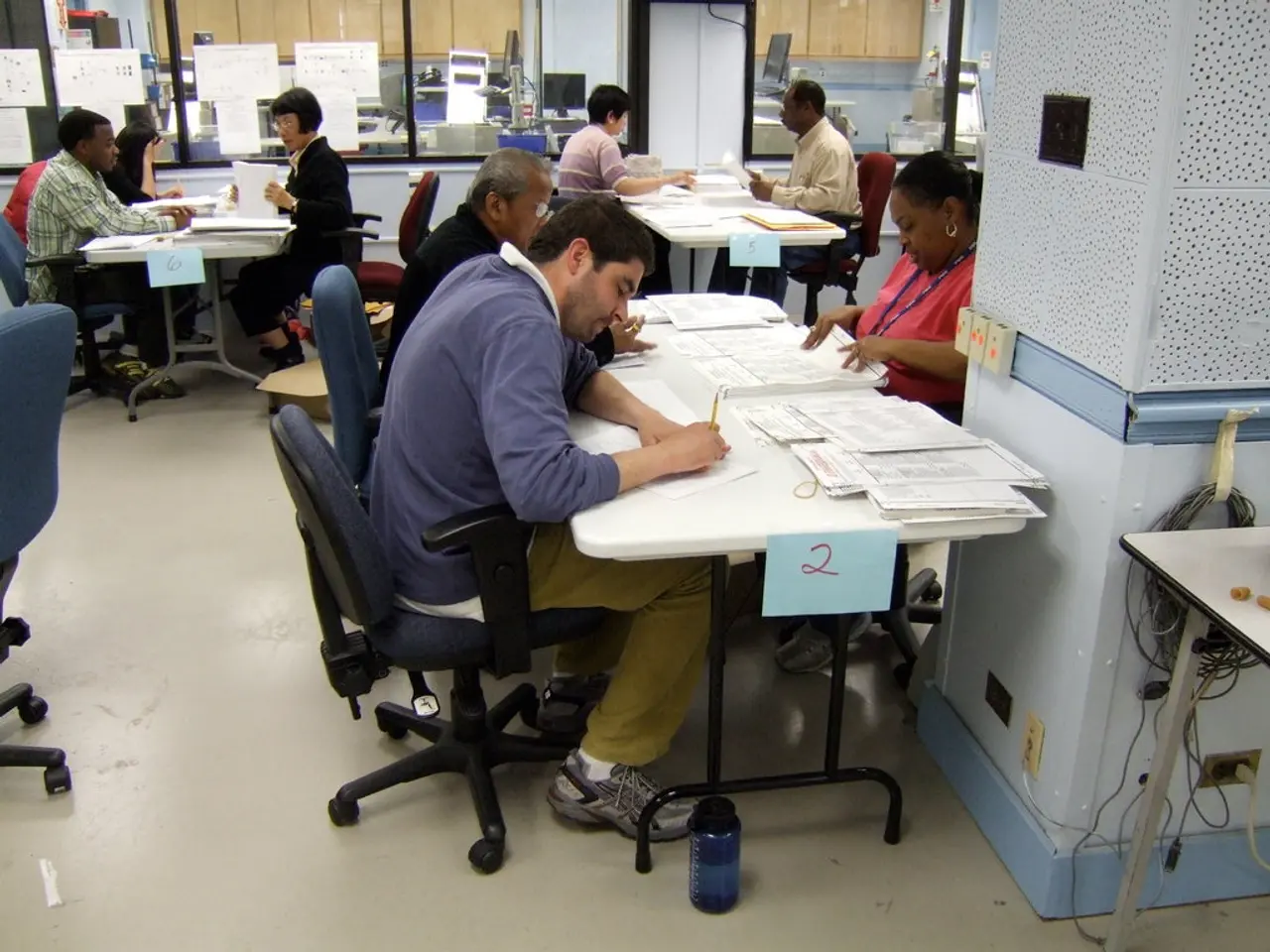Strategies for Surveilling Workers without Invading Their Privacy Excessively, Yet Guaranteeing Security
In today's dynamic work landscape, many businesses are adapting to a hybrid work environment, with employees working from offices, remote locations, or anywhere they choose. This new setup presents unique challenges for employers, particularly when it comes to monitoring employee productivity and ensuring business continuity.
Employee monitoring can offer valuable insights, helping employers understand how employees are performing and how to improve their productivity. It can also aid in protecting company information, improving communication, and identifying training needs. However, it's crucial to address potential issues like employee privacy and morale.
One approach to effective monitoring in a hybrid work environment is to focus on transparent, non-invasive, output-based measures. This means using productivity and project management tools to track task progress, timelines, and quality of output, rather than direct screen monitoring. Tools such as Asana, Trello, and Jira can provide visibility into work done without tracking every action.
Another approach is to monitor collaboration and communication metrics, such as response times in team chats, frequency of cross-team meetings, and shared document activity. This assesses engagement and teamwork without delving into individual behaviour tracking.
Non-invasive monitoring software, respecting privacy by tracking only application usage statistics, productivity ratios, and categorized work vs. non-work activities, is another key strategy. Tools like WorkTime use a "green" monitoring approach that avoids secret recordings and focuses on performance data while ensuring compliance with privacy laws like GDPR and HIPAA.
Setting clear expectations and communication principles about what is monitored and why is also essential. Transparency about data collection and usage helps maintain a healthy team culture. Employers should invite employees to join and use the software, which can be downloaded and installed on their computers.
Flexible time and attendance systems suited for distributed work are also crucial. These systems track working hours and availability without requiring invasive surveillance, enabling appropriate autonomy while ensuring compliance with labor regulations.
Real-time productivity tracking that aggregates active hours, app usage, and idle times can also be beneficial, but the data should be used to identify trends and support improvement rather than punish individual employees.
In conclusion, the best practice is to prioritize output-based measurement, collaboration analytics, transparency, and respectful technology over detailed monitoring of individual employee screens or activities. This balances productivity insights with employee privacy, trust, and autonomy in hybrid work settings. Employers should be aware of their responsibility to maintain and manage employee productivity, while also respecting their employees' privacy and fostering a positive work environment.
[1] Source: Forbes, "How To Monitor Employee Productivity Without Invading Privacy", March 2021. [2] Source: Inc., "The Right Way To Monitor Employee Productivity", June 2020. [3] Source: Harvard Business Review, "The Ethics Of Employee Monitoring", April 2019. [4] Source: Fast Company, "The Future Of Employee Monitoring", May 2021.
- To optimize productivity in the hybrid work environment, businesses can utilize remote employee monitoring tools like Asana, Trello, and Jira, which focus on output-based measurement and project progress.
- Non-invasive monitoring software, such as WorkTime, can be employed to track application usage statistics, productivity ratios, and categorized work vs. non-work activities, without infringing on employee privacy.
- Adopting a transparent and clear policy on monitoring will help maintain a healthy team culture in the workplace, ensuring employees understand what is being tracked and why.
- Employers should invest in flexible time and attendance systems that track working hours and availability without invasive surveillance, complying with labor regulations and promoting employee autonomy.
- By employing a "green" monitoring approach that respects privacy and uses performance data for improving productivity rather than punishing individual employees, businesses can strike a balance between productivity insights and employee well-being in the hybrid work setting.




